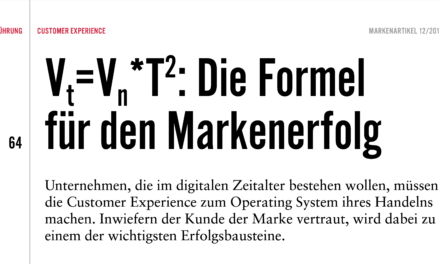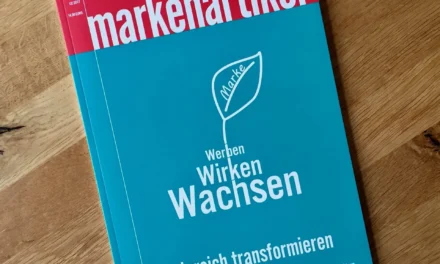Imagine this: every supposedly new idea you hear sounds disturbingly familiar. Everything feels like it’s been done before—smooth, polished, interchangeable. Welcome to the age of AI. An era in which we are drowning in answers, yet slowly losing originality. Because if everyone uses the same tools, gets the same answers, and recycles the same thoughts, innovation grinds to a halt before it even begins.
AI promises efficiency, speed, and seemingly infinite knowledge at the push of a button. But as we grow comfortable with that convenience, something essential is at risk: our ability to think critically.
Convenience as a Trap
We’ve all done it: a question pops into our head, and instead of thinking it through, we type it into ChatGPT, Google, or another platform. Boom—answer delivered. The catch? We forget how to question things.
Taking shortcuts trains our brain like a muscle we never use: it weakens. Psychologists are already observing a rise in “mental passivity”—the tendency to accept answers without putting in any effort ourselves. It may feel practical, but it’s dangerous. Because when we stop thinking, we slowly give up our capacity for judgment.
And let’s be honest: how often do we really check whether the answer an algorithm spits out is actually correct?
The Risk of Hallucination
AI is a master at simulating confidence—even when its answers are completely made up. Experts call this “hallucination.” It sounds harmless, but the consequences can be serious. In business, research, or daily life, anyone who blindly accepts what the machine says is building on sand.
What makes it particularly tricky is this: because AI sounds so convincing, we’re more likely to believe it than a human being. That inner voice saying, “Wait a second, this doesn’t sound right,” grows quieter. And that’s where a new danger creeps in—we become blind to mistakes we once would have spotted.
The Invisible Tilt
Another problem is bias blindness: AI is not neutral. It learns from data—and that data is shaped by humans, with all our biases, cultural blind spots, and distortions. Ignoring that fact means running the risk of adopting discriminatory or one-sided results without realizing it.
Critical thinking here means asking: Whose voice am I actually hearing? And: Which perspectives are missing?
The Sea of Sameness
There’s another side effect: when everyone uses the same tools to write texts, generate ideas, or design strategies, we drift into a sea of sameness. But innovation doesn’t happen when everyone takes the same path. It arises from friction, contradiction, and the courage to explore unusual ideas.
AI makes it easy to produce quick, usable answers. But too often those answers are average—smooth, generic, and interchangeable. It’s a comfortable copy-paste mindset that slowly suffocates creativity and originality.
The Loss of Responsibility
Here’s a subtle but powerful effect: when we rely too heavily on AI, we start shifting responsibility away from ourselves. “That’s what the machine suggested” suddenly sounds like an excuse. But in the end, it’s we who live with the consequences—not the algorithm. Critical thinking also means taking ownership of decisions rather than outsourcing blame.
Why Critical Thinking Is Becoming our next Superpower
Right now, we need the ability to break things down, compare perspectives, test hypotheses, and ask uncomfortable questions more than ever. Critical thinking isn’t just a safeguard against mistakes—it’s a catalyst for genuine innovation.
- It helps us challenge AI results instead of accepting them at face value.
- It forces us to generate our own options instead of settling for the first suggestion.
- It prevents us from drowning in the crowd—and sharpens our uniqueness.
- It protects us from manipulation—whether by machines or by people.
- It keeps our mental agility alive—a skill that’s only growing in value in a world of automation.
Five Ways to Train Critical Thinking in the Age of AI
- Don’t take the first answer. Use AI as an idea generator, but then ask yourself: What other perspectives are possible? Write down at least three alternatives.
- Ask “What if…?” questions. Challenge every solution with hypotheticals. What if the assumptions are wrong? What if the opposite were true?
- Double-check the facts. Don’t rely on AI alone—cross-reference with reliable sources. This extra step sharpens your judgment.
- Seek disagreement. Share your ideas with others or use tools to generate counterarguments. Friction is fertilizer for fresh thinking.
- Be creative yourself. Treat AI outputs as raw material, not the finished product. Add your experience, context, and style. That’s how you turn standard answers into something original.
The Courage to Think for Ourselves
Perhaps this is the real challenge of our time: learning to see AI not as a replacement for our thinking, but as a sparring partner. A counterpart that provides input—but does not carry the responsibility for the outcome.
Innovation thrives where we put in the effort to sift through information, embrace contradictions, and develop our own viewpoints. And yes, it’s harder than taking the ready-made answer. But it’s also the only way to avoid sinking into mediocrity in this “age of shortcuts.”
Put simply: AI is a powerful tool. But without critical thinking, that’s all it will ever be—a tool. The true art lies in how we use it. Progress doesn’t come from convenience, but from diversity, curiosity, and the courage to think differently.





